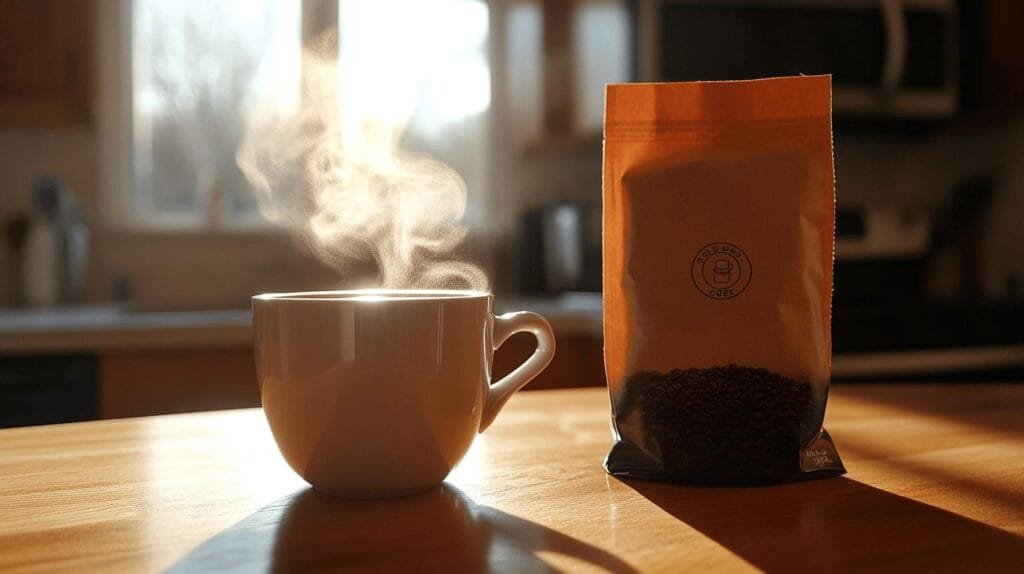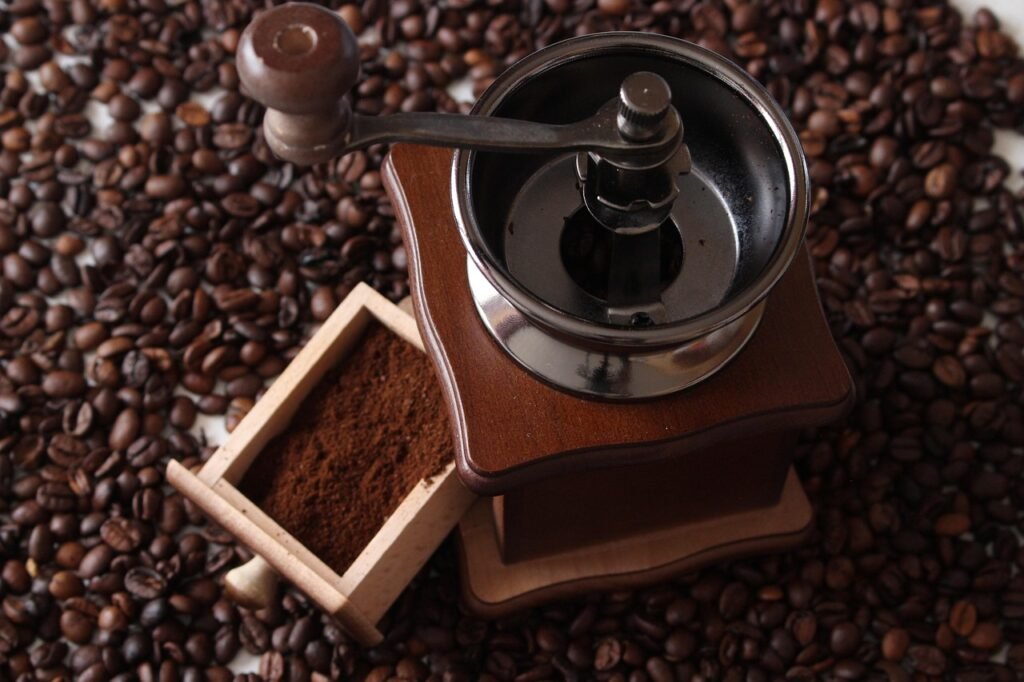
Artisanal Rituals for a Memorable Customer Experience
How can brands create a more balanced and memorable customer experience by blending artisanal product quality with thoughtful everyday rituals that keep people coming back?

Is bold coffee stronger than dark roast, or is this a misconception born from flavor myths? As coffee aficionados taste their way through bold and dark roasts, understanding what sets these robust flavors apart becomes essential. This exploration dissects the nuances of bold coffee’s thick, intense profile and the deep, bitter undertones of dark roast. Readers will uncover the distinctive brewing methods and characteristic flavor notes that define each, while challenging any preconceived notions about strength and caffeine content.
Bold coffee is known for its intense, concentrated flavor. This is often achieved by brewing methods that use less water, creating a brew similar to espresso. The result is a strong flavor with a fuller texture, perfect for those who enjoy potent coffee. The brewing process not only intensifies the coffee’s taste but also enriches its body, making it both satisfying and invigorating.
Common flavor notes in bold coffee include smoky and roasty undertones with a lingering aftertaste. These come from specific roasting techniques that highlight the coffee’s natural oils and sugars, giving it complexity. Bold coffee can also feature spicy or tangy elements, offering a taste experience that varies by the beans’ origin and roast level.

Dark roast coffee is defined by its extended roasting, transforming green beans into a deep, rich brown. This process not only changes the color but also the beans’ structure, producing surface oils that give a glossy look. High temperatures cause caramelization and degrade some flavors, resulting in boldness. Coffee enthusiasts often prefer this robust taste.
Dark roast is recognized for its bold, bitter, and smoky profile. These intense flavors come from chemical changes during roasting, enhancing tastes like burnt caramel and chocolate. Bitterness arises from the Maillard reaction and pyrolysis, occurring as beans reach their “second crack.” This phase reduces acidity compared to lighter roasts, offering a smoother, fuller feel.
A challenge with dark roast is hiding bean defects. Strong flavors can mask flaws like broken or unripe beans, creating undesired bitterness. For quality, choose specialty-grade beans to avoid imperfections. Opting for beans from reliable sources ensures dark roast’s flavors match the beans’ quality, providing a superior coffee experience.
Is bold coffee more potent than dark roast? When it comes to caffeine, the answer is no. Both are often misunderstood regarding caffeine levels. Many believe dark roast has more caffeine due to its intense flavor. However, roasting does not significantly change caffeine content. Differences relate more to how you measure—by volume or weight—than the roast itself.
Caffeine levels are more affected by coffee bean type and brewing method. Arabica beans have rich flavors but less caffeine than Robusta, which are bitterer and more caffeine-rich. Brewing methods like espresso concentrate caffeine with less water, while drip brew may offer a less concentrated cup. Therefore, factors like bean type and brewing method affect caffeine content more than roast level.

Brewing methods significantly influence coffee strength and flavor. Is bold coffee stronger than dark roast? It often depends more on brewing technique than the roast type. Methods like French Press, espresso, and Moka pot impact strength by altering concentration and extraction of coffee compounds. These techniques adjust the water-to-coffee ratio, extraction time, and pressure, affecting flavor intensity.
The choice of brewing method can highlight the qualities of both bold and dark roasts. French Press, with its full immersion and coarse grind, creates a full-bodied brew, enhancing bold flavors. Espresso, using high pressure and fine grind, extracts concentrated tastes, ideal for the deep notes of dark roast. Moka pots, similar to espresso but with less pressure, enhance bold flavors too. Experimenting with these techniques showcases the distinct characteristics of different roasts, delivering a captivating coffee experience.
Changing elements like water temperature and grind size can fine-tune the flavor profile. Higher temperatures and finer grinds increase extraction, leading to a stronger brew. Lower temperatures or coarser grinds result in milder taste. By experimenting, coffee lovers can tailor their brew’s strength and flavor, discovering new appreciation for brewing’s impact.
Is bold coffee stronger than dark roast? In terms of flavor, bold coffee often presents a more concentrated taste from brewing methods that extract more flavor compounds. This yields a smoky, roasty taste with a thicker texture. Dark roast, on the other hand, gains depth through extensive roasting, introducing flavors like bitter, smoky, and chocolatey notes.
While bold coffee typically offers a robust palate, dark roast brings a complex array of tastes, with pronounced bitterness and less acidity. Personal preference plays a significant role in choosing between bold and dark roast. Some may prefer bold coffee’s full-bodied, assertive nature, while others might enjoy the layered complexity of dark roasts. Both offer unique, compelling experiences tailored to different tastes.
Exploring the nuanced flavors and brewing methods of bold coffee stronger than dark roast reveals a world of coffee complexity. Each offers distinct taste profiles, from bold’s intense, concentrated character to dark roast’s rich, smoky essence. Despite common misconceptions, caffeine levels rely more on brewing techniques and bean choice than roast type. Different brewing methods significantly influence coffee’s strength and flavor. Eyeing the interplay of these elements can elevate at-home coffee experiences. Indulge in tasting and experimenting to discover which brewing practices best suit personal coffee preferences.
Bold coffee is not necessarily stronger than dark roast. Boldness refers to the intensity of flavor, while dark roast describes the roasting level impacting bitterness and smokiness. Strength is subjective, based on personal taste.
Bold on a coffee maker typically means the machine uses a longer brewing cycle or less water to increase flavor concentration, producing a more intense coffee taste similar to an espresso.
Bold coffee doesn’t inherently contain more caffeine than other coffee types. Caffeine content depends on beans used and brewing methods, not flavor intensity or roast type.
Bold coffee and dark roast are not the same. Bold refers to a strong, concentrated flavor, while dark roast relates to the longer roasting process yielding bitter, smoky notes.
Robusta beans are considered the strongest due to their higher caffeine content compared to Arabica. They produce a robust and bitter brew preferred by some coffee drinkers.

How can brands create a more balanced and memorable customer experience by blending artisanal product quality with thoughtful everyday rituals that keep people coming back?

Independent coffee shops have always been about more than caffeine—they’re hubs of creativity, connection, and care. As café culture continues to evolve, new trends are

Introduction Independent cafes win when they feel like the neighborhood’s living room and operate with the discipline of a great kitchen. Below is a quick

Discover how top specialty coffee brands create lasting loyalty through storytelling, sourcing, and community connection. Real tips from 6 industry experts.

Discover the ultimate showdown between two beloved coffee brewing methods: the French press and Chemex. Explore how each technique caters to distinct palates, with the French press delivering bold flavors and the Chemex presenting a bright, clean taste.

Unlock the secrets to brewing the perfect cup of coffee with our comprehensive guide on using a coffee scale. Discover how precise measurements enhance flavor and consistency while eliminating bitterness.

Discover how water temperature plays a vital role in brewing the perfect cup of coffee. This article delves into the ideal temperature range of 195°F to 205°F for optimal flavor extraction, enhancing the enjoyment of high-quality beans.

Discover the world of curated specialty coffee bundles, perfect for enthusiasts seeking quality and craftsmanship. This article explores the benefits of ethically sourced, small-batch beans from brands like Equipoise Coffee, offering diverse flavor profiles that elevate your brewing experience.

Discover the art of manual brewing to elevate your coffee experience! This article explores various techniques like pour-over, French press, and AeroPress, revealing how they enhance flavor and your connection to every cup.